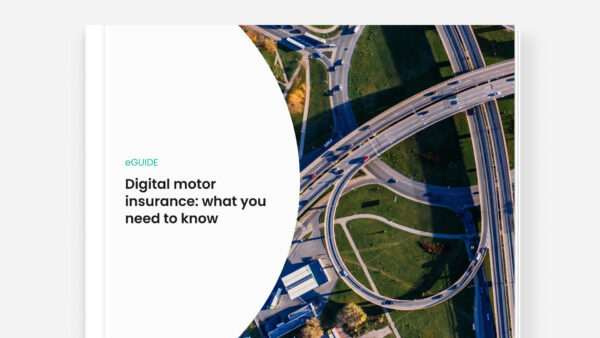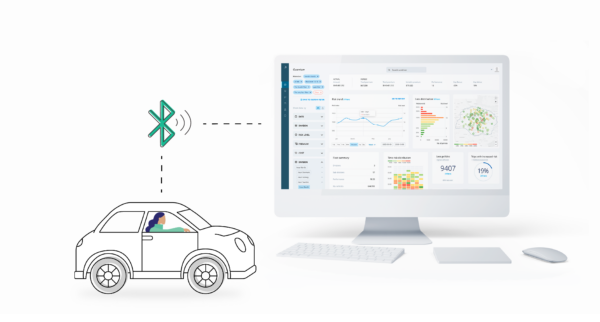
Goodbye black box? Pattern AI is delivering new risk intelligence
Improve accuracy of connected insurance with latest in driver risk analysis
It’s hard to believe that it was only just over a decade ago that the first black boxes were introduced in personal lines, enabling the advent of connected insurance, and starting the trend of incorporating what was then called telematics into driver risk management.
Some of the major advantages of the black box were that it could, with variable success, detect crash events; measure driver risk based upon event-led proxies; and help identify insurance application fraud. However, a major downside that remains today is the cost, at roughly £100/$125/117 Euros per fitted unit. There are, of course, other methods of obtaining the power to run these boxes, including OBD plugins, which make use of a vehicle’s on-board diagnostics port. These systems can be half the price of hardwired black boxes if the port is accessible, which is not always the case. There are also solar powered options, but variable sunlight in Northern Europe can cause issues here too.
Machine learning is accelerating driver risk management
In the last few years, we’ve seen developments in smartphone-based solutions that have allowed insurers to bypass black boxes and OBD systems completely. But, of course, technology doesn’t stand still. Today, machine learning is advancing the capabilities of smartphone-based driver risk management at an incredible pace.
Pattern artificial intelligence (AI) is now at the forefront of risk-based smartphone solutions, providing insurers with a new perspective on driver risk. No longer do insurers have to rely on event-led proxies to measure driver risk. Instead, they can utilize machine learning that analyzes every second of driving and uses pattern AI to accurately predict crash probability. A significant benefit to insurers is early understanding, in as little as four weeks of the likely ultimate loss cost. Targeted action to ensure loss ratio reduction, and a reduction in frequency and severity of claims being the ultimate deliverable.
Driver risk analysis links directly with profitability and loss ratio
A huge challenge for the motor insurance industry is that, traditionally, underwriting and risk analysis has been based on factors such as driver age, mileage, location, vehicle, and job. This has proven to be a good starting point for measuring risk but gives no regard to actual driving performance. The result is potentially high premiums for some lower risk customers and, conversely, lower premiums for higher risk customers who win the proxy-based pricing lottery. The impact on profitability for insurers is even worse, with devastating combined ratios of over 100%. Ironically, we see as much as 50% of the loss costs coming from as little as 15% of the book. Pattern AI shines a light on this 15%, making loss ratio improvements of more than 10% very deliverable, through targeted driver action or education.
Telematics provided an opportunity for change. By identifying how a driver performed on the road, the insurer could allow a proportion of the premium to be variable, based on actual driving behaviors. Unfortunately, event-based measures of driver risk identified through telematics – such as harsh acceleration, braking, and cornering have little direct correlation to crash risk when used in isolation. A sudden braking maneuver, for example, might correlate with a crash, but in many situations, it can also save lives and can be an indicator of driver awareness, not poor driving craft.
Taking driver risk analysis to the next level
Pattern AI examines all the circumstances surrounding a given situation, gleaning a complete view of driver risk in real time. Rather than measuring events, it measures every second of driving during a trip, providing a comparable crash probability score.
At Greater Than, our Pattern AI uses a machine learning system trained on real vehicle data and pattern recognition. To date, it has identified over 7 billion different ways to drive a vehicle. These patterns, along with actual crash statistics, allow us to identify crash probability. Our AI is continuously trained, which further sharpens the algorithms and makes it possible to obtain even more accurate analysis in the broader spectrum.
A major advantage for insurers is a projection of how their future claims costs could look before the claims occur. This can provide a 12 to 18-month lead compared with other risk calculation models.
Does pattern AI leave the black box redundant?
Pattern AI requires only GPS data, obtainable via a simple API connection. Importantly, no additional hardware or tag is required. The GPS data can also be derived from a dash cam. For insurers wishing to maintain relationships with telematics partners and benefit from logistics solutions and/ or crash detection, they can continue to use existing hardware and keep the black box. Pattern AI can turn this disparate data into one consistent score across multiple current or previous providers. This enables a 360-degree view of future loss ratio, without losing the elements of a black box proposition they treasure.
Because no additional technology is needed, pattern AI is much more cost-effective for insurers. Additionally, because it is Software as a Service (SaaS), there is no sunk cost from pre-purchased hardware and connectivity for the insurance company, should the customer cancel mid-term.
Machine learning is transforming the road ahead
AI has already raised customers’ expectations for a more cost-effective, agile, and personalized insurance offering. By leveraging pattern AI, insurers can deliver greater value and improve customer retention. Real-time analysis of driving behavior enables insurers to provide personalized insurance that analyzes individual customer crash probability. This means that the amount they pay more accurately reflects their driving behavior and risk. Because the technology is very affordable, the measurement of all risk segments becomes instantly possible.
AI is already helping many insurance companies to deliver their products and services more effectively. With pattern AI, insurers can focus loss reduction strategies firmly on “predict and prevent”, without the need for new in-vehicle technology. There is no need to pay to install black box/ OBD technology to obtain limited event-based driver insights. Instead, the insurer can utilize machine learning and GPS based pattern AI to accurately understand and price a customer’s future risk and cost. The result is an improved offering for customers, with improved profitability for the insurer.
Contact Greater Than or book a meeting with me to learn more about what pattern AI can do for your business.



